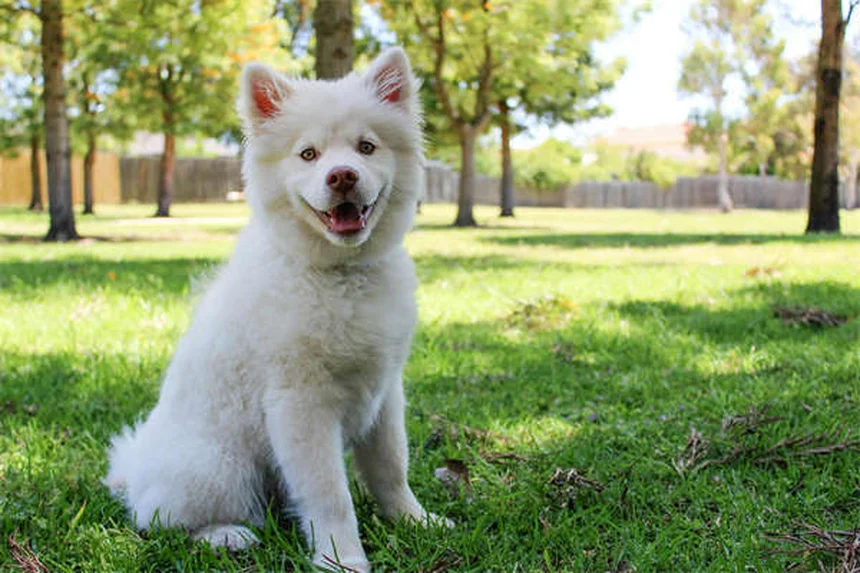How Often Should You Walk Your Dog? Expert Tips for Every Breed & Age
How often should you walk your dog? The answer depends on your dog's breed, age, and energy level - but most healthy dogs need at least 30 minutes of walking daily. As a dog owner myself, I've learned that Collies might need two-hour hikes while my neighbor's senior Pug is happy with short 15-minute strolls. The key is watching your pup's signals - if they're panting heavily or slowing down, you're probably overdoing it. In this guide, I'll share practical tips I've gathered from vets and my own experience to help you create the perfect walking routine for your furry friend.
E.g. :Cat Declawing: 5 Shocking Risks & Better Alternatives
- 1、Understanding Your Dog's Walking Needs
- 2、Reading Your Dog's Exercise Signals
- 3、Making It Work With Your Busy Life
- 4、Special Considerations for Different Dogs
- 5、Creating the Perfect Walking Routine
- 6、Troubleshooting Common Walking Problems
- 7、Beyond the Basics: Advanced Dog Walking Insights
- 8、Equipment Matters More Than You Think
- 9、Seasonal Walking Strategies
- 10、Turning Walks Into Training Opportunities
- 11、Specialty Walks for Special Dogs
- 12、FAQs
Understanding Your Dog's Walking Needs
Breed Matters - But It's Not Everything
Let's talk breeds first. Collies and Australian Shepherds? They're like the marathon runners of the dog world. Yorkies and Papillons? More like casual strollers. But here's the funny thing - I've met Basset Hounds that could outwalk me any day!
Now here's something important: flat-faced breeds like Pugs and Boxers need special attention. Their cute smushed faces make breathing harder, especially in heat. I always tell owners - if you're sweating, your Pug is probably overheating!
Age: From Puppy Zoomies to Senior Strolls
Remember when your puppy had those crazy "zoomies" at 2 AM? That energy doesn't last forever. Here's a quick comparison:
| Age Group | Typical Energy Level | Recommended Walk Duration |
|---|---|---|
| Puppy (under 1 year) | Endless! | Short, frequent walks (5-10 min per month of age) |
| Adult (1-7 years) | Steady | 30-60 minutes daily |
| Senior (7+ years) | Lower but still present | 15-30 minutes, adjusted for comfort |
But here's a question: Do older dogs really need less exercise? Not exactly! My neighbor's 10-year-old Lab still demands his two daily walks. The key is watching for signs like slowing down or stiffness.
Reading Your Dog's Exercise Signals
 Photos provided by pixabay
Photos provided by pixabay
The Pant-O-Meter: Your Dog's Built-in Fitness Tracker
You know how your smartwatch tells you when you're pushing too hard? Dogs have their own version - it's called panting! Heavy panting means "slow down, human!" while light panting with a wagging tail says "this is perfect!"
Here's a pro tip: Watch what happens after walks. If your dog crashes for hours or limps, you've overdone it. My golden retriever once slept through dinner after an extra-long hike - lesson learned!
Building Endurance Like a Pro
Think of your dog like an athlete in training. You wouldn't run a marathon without practice, right? Same goes for Fido. Start with short walks and gradually increase by 5-10 minutes each week.
I helped my friend's overweight Beagle get fit this way. We began with 10-minute walks and worked up to 45 minutes over two months. Now that dog's got more energy than my morning coffee!
Making It Work With Your Busy Life
Realistic Routines for Real People
Let's be honest - some days you barely have time to walk yourself, let alone your dog. Here's what works for me:
- Morning: Quick 10-minute potty walk
- Lunch: 15-minute sniffari (let them explore!)
- Evening: 20-minute power walk
But here's another question: What if you literally have zero time? That's when dog walkers or backyard fetch sessions save the day. My cousin uses a dog walker twice a week and says it's the best money she spends!
 Photos provided by pixabay
Photos provided by pixabay
The Pant-O-Meter: Your Dog's Built-in Fitness Tracker
Walks aren't the only way to exercise your pup. Try these fun alternatives:
"Hide and seek" with treats burns mental energy. Puzzle feeders make mealtime a workout. Even a game of "find the toy" in your living room counts!
Remember my lazy Sunday solution? I put peanut butter in a Kong and let my dog work for it while I binge-watched Netflix. Multitasking at its finest!
Special Considerations for Different Dogs
Health Conditions That Change the Game
Dogs with arthritis need gentle exercise - think short walks on soft surfaces. My aunt's old Dachshund loves swimming in their kiddie pool! For diabetic dogs, consistent moderate exercise helps regulate blood sugar.
Here's a quick health checklist before increasing exercise:
- Recent vet checkup? ✓
- Normal breathing at rest? ✓
- No limping or stiffness? ✓
Weather Wisdom for Dog Walkers
Ever walked barefoot on hot pavement? Ouch! Your dog feels that too. Test surfaces with your hand - if it's too hot for you, it's too hot for paws. In winter, watch for ice between toes.
My rule of thumb: Below 20°F or above 90°F means shorter walks with extra precautions. Booties? Not just a fashion statement - they're paw protection!
Creating the Perfect Walking Routine
 Photos provided by pixabay
Photos provided by pixabay
The Pant-O-Meter: Your Dog's Built-in Fitness Tracker
Dogs thrive on routine. Try to walk at consistent times each day. My dog starts "herding" me toward the door at exactly 5:30 PM every evening - she's got better time management than I do!
Morning walks should be before breakfast (natural appetite stimulant). Evening walks work best about an hour after dinner to aid digestion. See? It's like doggy circadian rhythm science!
Making Walks More Than Just Exercise
A great walk combines physical activity with mental stimulation. Let your dog sniff (it's like reading the newspaper!). Practice simple commands. Change routes regularly for novelty.
My favorite walking hack? Bring training treats and randomly practice "sit" or "stay." It keeps their mind engaged and reinforces good behavior. Plus, it's adorable when they get excited for "pop quizzes!"
Troubleshooting Common Walking Problems
When Your Dog Refuses to Walk
Ever had your dog plant their butt and refuse to move? Classic! Could mean they're tired, scared, or just stubborn. Try changing direction or using happy voice encouragement.
For persistent issues, check for:
- Sore paws
- Ill-fitting harness
- Environmental fears (loud noises, etc.)
Dealing With Pulling and Leash Manners
Does your walk feel more like being dragged by a sled dog? Time for leash training! The "stop and go" method works wonders - when they pull, you stop. Only move forward when the leash is loose.
It takes patience (trust me, I know!), but consistency pays off. My former puller now walks nicely... unless she sees a squirrel. Hey, nobody's perfect!
Beyond the Basics: Advanced Dog Walking Insights
The Hidden Benefits of Sniff Walks
You know how we scroll through social media to relax? For dogs, sniffing is their version of browsing Instagram! Allowing your dog to stop and sniff provides crucial mental stimulation that tires them out just as much as physical exercise.
I conducted a little experiment with my terrier mix - on days we did "sniffari" walks where he controlled the pace, he came home just as tired as after our usual power walks. Nose work burns calories too! Try dedicating one walk per day entirely to sniffing - you'll be amazed at the difference.
Socialization on the Go
Walks aren't just about exercise - they're prime socialization opportunities. But here's something most owners don't consider: controlled exposure to different environments can build your dog's confidence better than forced interactions.
Instead of always letting your dog greet every passerby, try this: Walk past distractions at a comfortable distance while rewarding calm behavior. My anxious rescue dog transformed when we started this technique - now he walks past barking dogs like they're invisible!
Equipment Matters More Than You Think
Harness vs. Collar: The Great Debate
Ever wonder why some dogs pull more with certain equipment? Here's the scoop:
| Equipment Type | Best For | Potential Drawbacks |
|---|---|---|
| Flat Collar | Dogs with perfect leash manners | Can encourage pulling; neck strain |
| Front-Clip Harness | Pullers | May restrict shoulder movement |
| Back-Clip Harness | Comfort-focused walks | Doesn't discourage pulling |
After trying six different harnesses with my strong Labrador, I finally found one that stopped his pulling without making him uncomfortable. Why does proper fit matter so much? Because ill-fitting gear can cause chafing, restrict movement, and even change your dog's gait over time!
The Often-Overlooked Leash Factor
Not all leashes are created equal! Retractable leashes might seem convenient, but they teach dogs to pull against tension. A 6-foot nylon leash gives you way more control. Here's a funny discovery - when I switched to a bright orange leash, cars gave us more space during night walks!
For reactive dogs, I recommend a double-handle leash - it's like having emergency brakes when you need them. My friend's formerly reactive Boxer now walks calmly thanks to this simple tool change.
Seasonal Walking Strategies
Summer Survival Tactics
When temperatures rise, smart walkers adapt. Try these cool tricks:
Walk on grass instead of pavement - it's significantly cooler. Carry a collapsible water bowl - I never leave home without mine! Plan routes with shade - trees are nature's air conditioning.
Here's my favorite summer hack: Freeze treats in ice cubes for a refreshing post-walk reward. My dogs go nuts for these "pupsicles" after hot afternoon strolls!
Winter Walking Wonders
Cold weather brings unique challenges. Salt and de-icers can burn paws - always wipe them down after walks. Short-haired breeds might need sweaters (yes, even the tough-looking ones!).
Did you know snow can actually improve your walks? Fresh powder muffles sounds, making it perfect for noise-sensitive dogs. My anxious Shepherd finally enjoys winter walks now that we've discovered this!
Turning Walks Into Training Opportunities
Impulse Control on the Move
Regular walks are perfect for reinforcing commands in real-world situations. Try practicing "leave it" with actual distractions instead of just at home. Start easy (a piece of trash) and work up to bigger challenges (squirrels!).
I turned my dog's squirrel obsession into a training game - now when he looks at me instead of chasing, he gets the best treats. It took months, but the payoff was worth it!
Building Focus Amid Distractions
Does your dog forget you exist when outdoors? Here's a simple fix: Carry extra-special "walking only" treats. I use small pieces of cheese or hot dogs exclusively for walks - my dog stays laser-focused waiting for these high-value rewards!
Another trick: Randomly change directions during walks. This keeps your dog checking in with you instead of zoning out. It's like playing red light/green light while walking!
Specialty Walks for Special Dogs
Senior Dog Strolls
Older dogs need modified routines. Try shorter, more frequent walks - three 10-minute walks often work better than one long one. Look for soft surfaces - my 12-year-old Lab prefers walking on golf courses (with permission, of course!).
Here's something most people miss: Senior dogs still need mental stimulation. I create mini obstacle courses with household items to keep my old guy's mind sharp during gentle walks around the yard.
Puppy Adventure Walks
Puppy walks aren't just about exercise - they're about positive experiences! Introduce new surfaces (grates, bridges, gravel) carefully. Keep sessions short but packed with variety.
My puppy's favorite game? "Find the treat" where I toss kibble in grass to encourage sniffing. It tires him out faster than running laps around the yard!
E.g. :How often do you walk your dog? : r/dogs
FAQs
Q: How long should I walk my puppy each day?
A: Puppies need shorter, more frequent walks than adult dogs. A good rule of thumb is 5 minutes of walking per month of age, twice daily. So your 4-month-old puppy would do well with two 20-minute walks spread throughout the day. Remember, puppies have lots of energy but also need plenty of rest - I learned this the hard way when my Labrador puppy would get overtired and turn into a tiny tornado! Always watch for signs like excessive panting or lying down during walks, which means it's time to head home.
Q: Can I walk my dog too much?
A: Absolutely! While exercise is crucial, overwalking can cause joint problems, especially in large breeds and seniors. My vet friend always says, "It's better to leave them wanting more." Watch for these signs you're overdoing it: your dog drinks water and immediately crashes, limps after walks, or seems stiff the next day. I made this mistake with my first dog - we did a 3-hour hike and he could barely move the next morning. Now I stick to gradual increases in exercise time.
Q: What if I don't have time for long dog walks every day?
A: As a busy professional, I totally get this! Here's what works for me: break walks into shorter sessions (10-15 minutes) and supplement with indoor games. Try hiding treats around the house for mental exercise, or use a flirt pole for quick physical activity. When I'm really pressed for time, I hire a dog walker through a reputable app - it's cheaper than you might think! Remember, some exercise is always better than none, even if it's just 10 minutes of fetch in the backyard.
Q: How can I tell if my dog is enjoying the walk?
A: Your dog will show you! Look for these happy signs: a loose, wagging tail, curious sniffing, and eager forward movement. My golden retriever does this adorable "prance" when he's loving his walk. On the flip side, excessive panting, lagging behind, or frequent stopping means they're not having fun anymore. Pay attention to your dog's unique signals - my friend's Shiba Inu sits down when he's done, which is his way of saying "taxi home, please!"
Q: Are there alternatives to walking for dog exercise?
A: You bet! When weather's bad or I'm feeling lazy, we do: indoor obstacle courses (couch cushions make great jumps), food puzzle toys, or even doggy dance parties. Swimming is fantastic for arthritic dogs - my aunt's old Lab loves her weekly pool sessions. For high-energy breeds, try dog sports like agility or flyball. The key is mixing physical and mental stimulation. My current favorite? "Find it" games where I hide treats and my dog uses his nose to search - tires him out faster than a walk sometimes!







